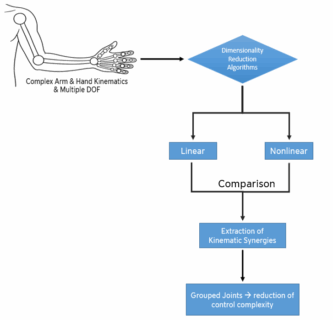Vergleich linearer und nichtlinearer Methoden zur Extraktion von Oberarm-Synergien
Despite involving many joints and degrees of freedom, human movement is remarkably smooth, effortless and energy efficient. This is due to the fact that instead of managing each joint or muscle independently, the central nervous system (CNS) coordinates them in functional groups, reducing the dimensionality of motor control. These coordinated patterns, known as motor synergies, allow the brain to generate efficient, adaptive movement using a compact set of control signals. Understanding and modeling these synergies can potentially advance robotic control by optimizing joint-level complexity and improving human-likeness.
This bachelor thesis focuses on extracting, defining and comparing synergy models (linear vs. nonlinear) from upper limb joint kinematics data during Activity of Daily Living (ADL).
More information can be found here .
Maria Luna Ghanime
Department Elektrotechnik-Elektronik-Informationstechnik (EEI)
Lehrstuhl für Autonome Systeme und Mechatronik
- Email: maria.luna.ghanime@fau.de
